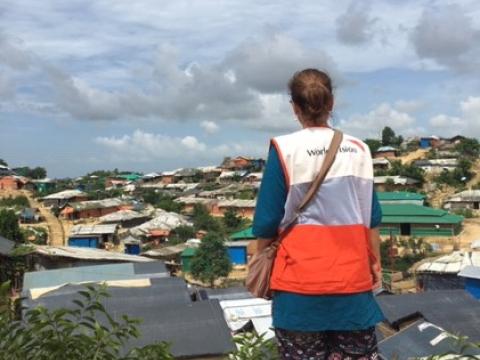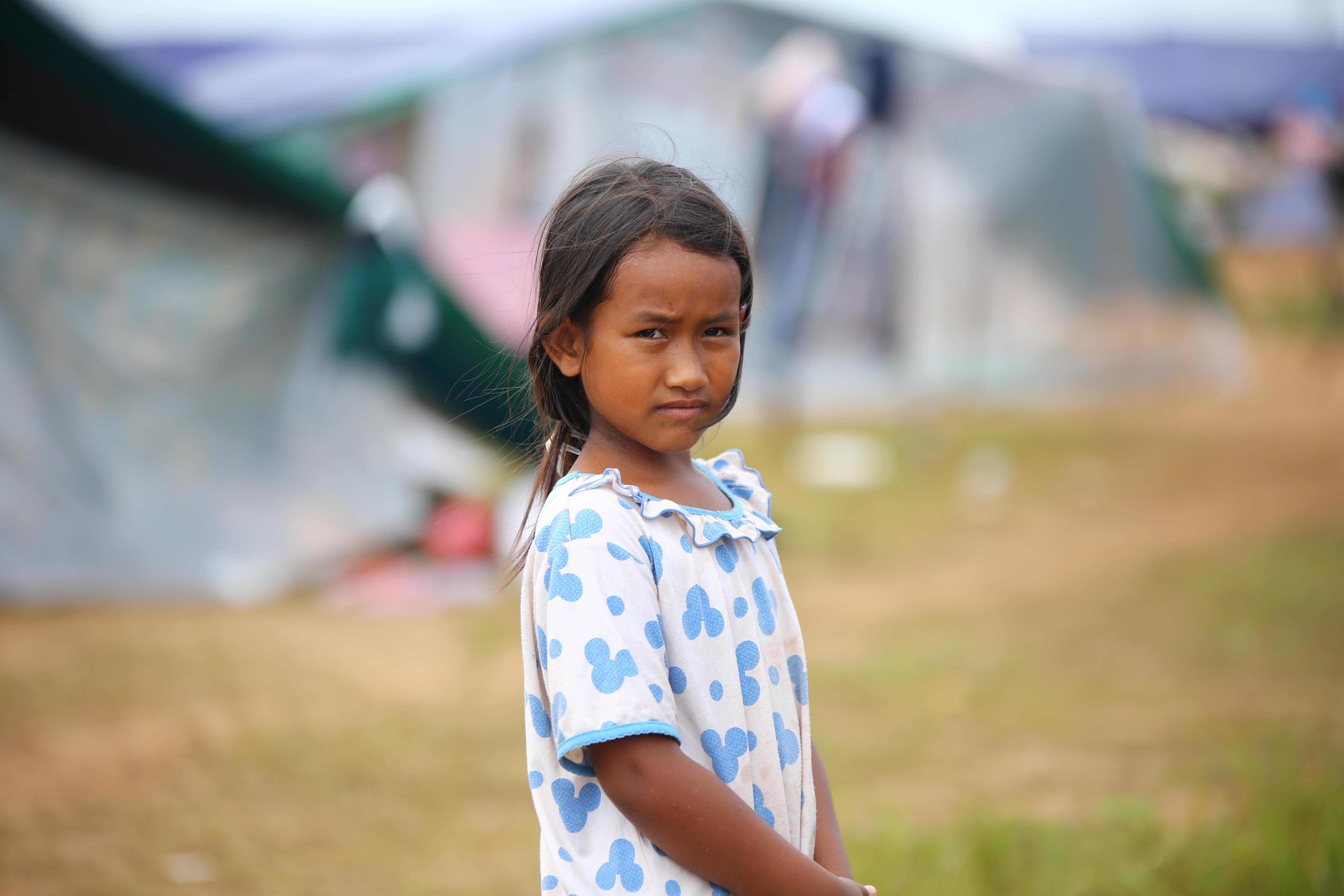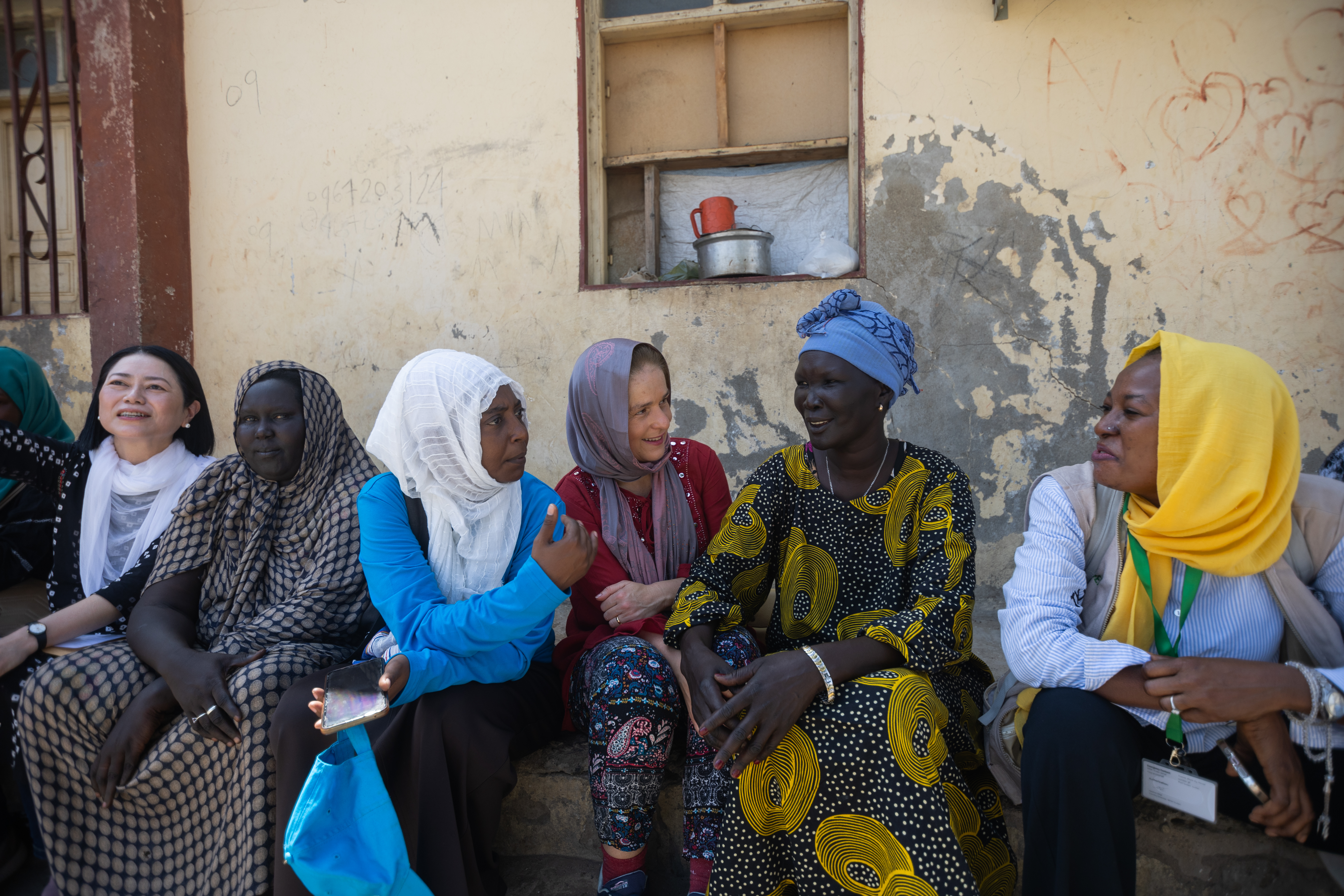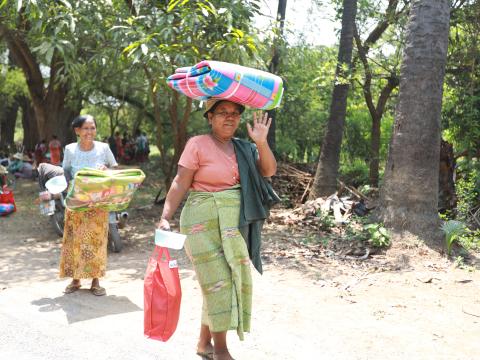
When Humanitarians Show Up, Hope Emerges Stronger
Isabel Gomes, Global Lead for Disaster Management at World Vision International, reflects on the evolving and increasingly perilous landscape of humanitarian work. Marking World Humanitarian Day 2025, she urges the global community to move beyond symbolic recognition and toward accountability and protection for aid workers and the communities they serve.
World Humanitarian Day – August 19
I have stood in places where hope felt impossible and watched humanitarians bring it back to life. That, to me, is nothing short of extraordinary. Every year on August 19th, we celebrate World Humanitarian Day, a moment to honour those who dedicate their lives to helping others in the most difficult and dangerous circumstances. On World Humanitarian Day 2025 the United Nations' #ActForHumanity campaign is shifting from awareness to accountability, demanding that governments and armed actors respect international humanitarian law, end impunity, and protect the humanitarian space.
At the heart of the campaign is this simple truth: protecting humanitarians is inseparable from protecting the people they serve. When humanitarian access is blocked or workers are attacked, children go without food, medicine, and protection. Civilians suffer, and the entire system of humanitarian law erodes.
This day also commemorates the victims of the 2003 bombing of the UN headquarters in Baghdad, where 22 humanitarian workers tragically lost their lives. And this year is particularly critical as the whole humanitarian system is being rethought, the number of killed aid workers and civilians is increasing drastically, and crises are longer, more complex and increasingly driven by climate change, protracted conflict, and economic collapses.
But today is not only about remembering the past. It’s also about honouring the present and looking to the future with renewed hope. It’s about recognising and empowering those who continue to serve, with courage and compassion, in places where hope hangs by a thread.
Today is about us, my dear humanitarian colleagues.
We are the brave souls who run toward disaster when others flee.
We stay long after the headlines fade.
We leave behind our families to stand beside strangers in their darkest hour.
It’s because of the aid workers that my faith in humanity grows.
The Challenges Humanitarians Face Today
Stay to be safe or go to serve?
We want to reach people affected by crises, hear from them, understand what they want and need, and respond with dignity. And yet, humanitarian access is increasingly denied and aid workers targeted. We are at a point where it’s no longer just about the lives of those impacted by conflict or natural hazards but also about the lives of those who serve.
Halfway through 2025, only 17 percent of the $46 billion required to meet global humanitarian needs has been received, marking an alarming 40 percent drop compared to the same time last year. The UN Office for the Coordination of Humanitarian Affairs (OCHA) has revised its global funding appeal to $29 billion, reducing the number of targeted people to 114 million. As humanitarian needs escalate, the widening gap between what is required and what is delivered underscores a system in urgent need of reform—one that is falling short of its commitment to the communities it aims to support. When aid is politicised or underfunded, hope is lost.

At the same time, violence against humanitarian workers is escalating at an alarming pace. In 2024 alone, and over 380 humanitarian workers were killed across 20 countries, nearly 100 more than the previous year — marking the deadliest year on record for humanitarian staff. When humanitarians are targeted, civilians suffer.
With over 36,000 lives lost across 14 active conflicts, civilians continue to bear the devastating impact of armed conflict and violence. Meanwhile, forced displacement has reached an extraordinary level, with 122.6 million people uprooted from their homes globally.
As of August 2025, 248 more have lost their lives[1] —with national staff disproportionately affected in high-risk contexts such as Ethiopia, Sudan, South Sudan, Lebanon, the Occupied Palestinian Territories, Myanmar, Ukraine, and Syria. If current trends continue, 2025 may become the deadliest year for humanitarian personnel on record.
While we honour those who serve in the world’s most dangerous places on World Humanitarian Day, we must also confront a sobering truth: humanitarian workers are facing unprecedented threats. The systems they uphold are being dismantled, their safety compromised by violence, and their ability to respond undermined by shrinking budgets. These are not just operational challenges—they are life-and-death consequences. Without urgent action, the cost will be measured not only in lost jobs but in lost lives.
Help fewer now or risk helping none later?
During my last visit to Port Sudan, I met a young girl, full of energy and life. Her smile was a testament to her strength and resilience. She was close to the age of my teenage daughter. That simple exchange reminded me that behind every crisis are lives, dreams and futures that deserve to be protected and nurtured.
We want to provide life-saving assistance, protection, and hope. But the resources to do so are reducing. A recent World Vision report, revealed that families who experienced food assistance cuts were the most vulnerable of all; they were 5.4 times more likely to be moderately or severely food insecure and reported worse child-related education and protection outcomes.
We are at the point where humanitarians must take from the hungry to give to the starving. This heartbreaking reality is reflected in the ongoing “hyper-prioritisation” exercises and drastic operational scale-backs.
Advancing Collective Action
We continue to urge all parties to take immediate measures to end conflicts and sustain peace through diplomatic and political solutions. This is a critical element to save lives and alleviate the unacceptable suffering faced by the most vulnerable, especially children.
In a context of escalating humanitarian needs and mounting challenges, coupled with inadequate and restricted aid funding, programmatic solutions in isolation will not be enough to prevent and respond to hunger, harm and hard choices.
Let us then be bold in uniting and raising our voices against the retreat from humanitarian norms, demand compliance with International Humanitarian Law (IHL), respect of humanitarian principles and alignment with UN Security Council Resolution 2417, which prohibits the deliberate starvation of civilians as a weapon of war, promotes early warning and seeks to protect essential civilian infrastructure from attack.
Purpose in peril: the unwavering spirit of those who serve
With all the danger the future holds, the extraordinary power of compassion and solidarity has never been more prominent. Humanitarians continue to fulfil their purpose. They continue to choose to risk their life for the people caught in conflict who have no choice. They continue to pay the ultimate sacrifice in the hope that the people they serve may have a chance to live their lives to the fullest.
It’s these experiences and moments of inspiration from my colleagues that have shaped not just my career, but my purpose. It’s solidified the one truth that has always guided me: humanitarian aid is not just assistance. It’s a lifeline.
On this World Humanitarian Day, let us honour not only the memory of those we have lost, but also the courage of those who continue to provide that lifeline.
Let us recommit to protecting humanitarian space, enabling humanitarian access in complex settings, investing in the communities we serve, and supporting the people who deliver hope.
Because when humanitarians show up, hope emerges stronger.
About the author
Isabel Gomes oversees the organisation’s humanitarian responses, with a focus on decreasing the vulnerability of millions of children before, during and after disasters. Currently based in Geneva, Switzerland, Isabel’s experience spans 25 years in the humanitarian sector, with recent experience in global donor engagement, resource development, strategy, operations and policy.
After beginning her career working with demobilised soldiers in Angola, Isabel worked in a variety of roles responding to humanitarian crises across 15 countries and some of the world’s most challenging contexts, including East Timor, Liberia, Sudan, Pakistan, Indonesia and Mozambique.
[1] Note that these figures come from the Aid Worker Security Database. Figures may be refined slightly for the annual UNOCHA release of official numbers on August 19, World Humanitarian Day.

